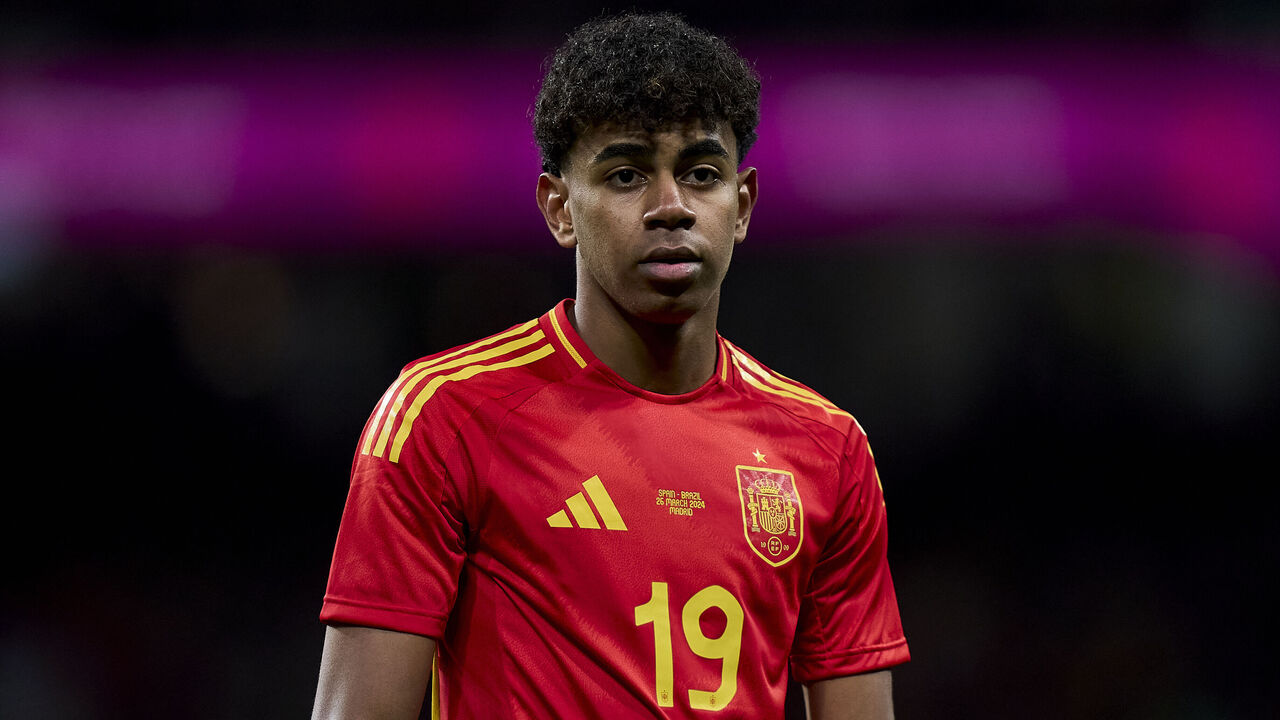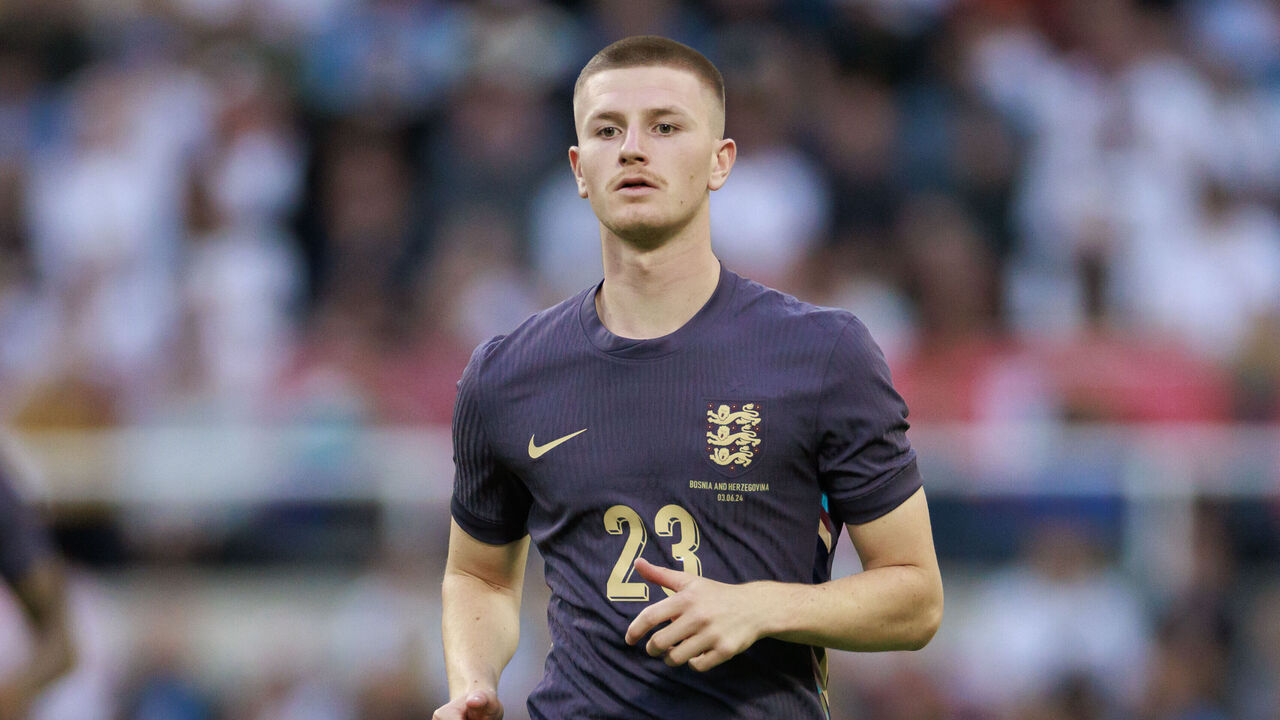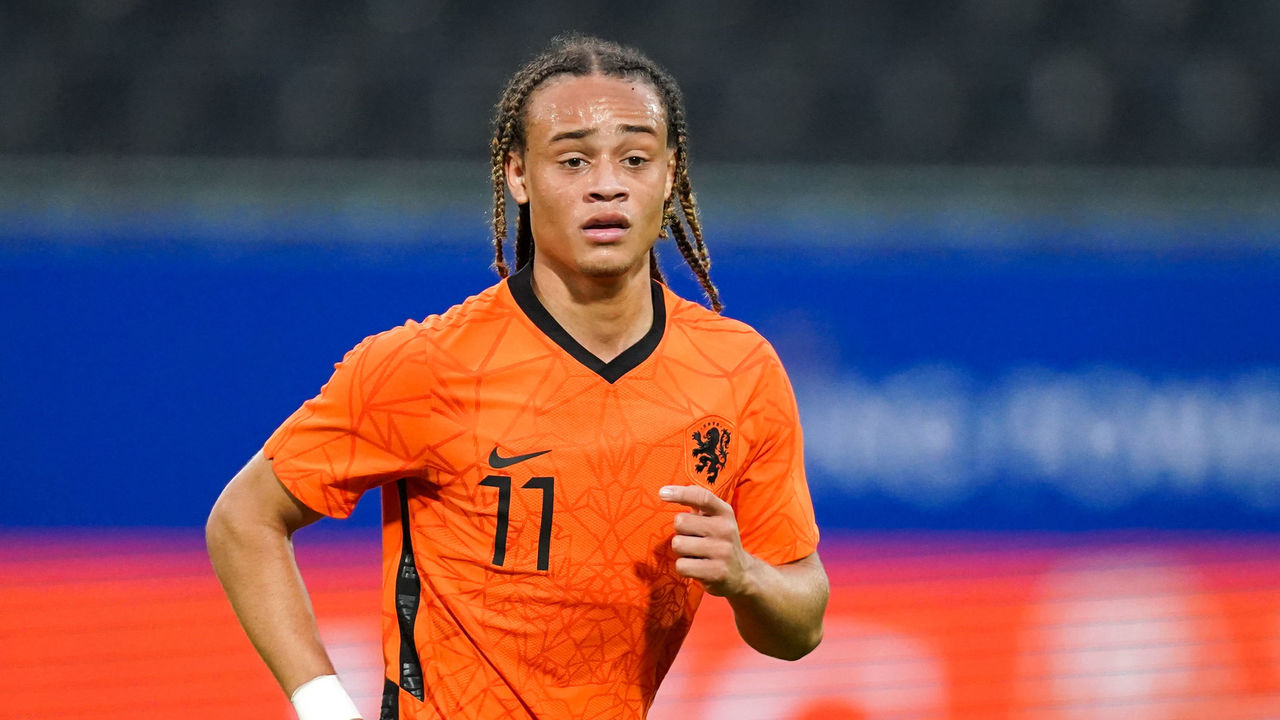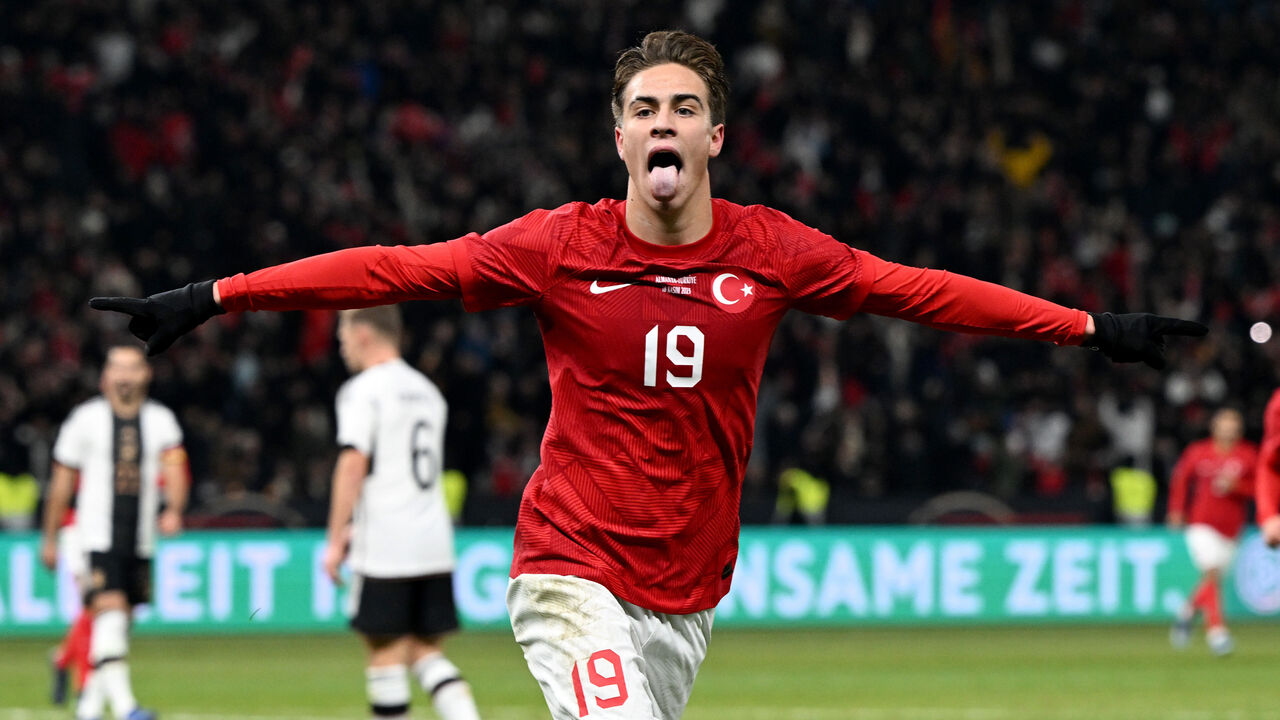Euro 2024 X-factors: Breakout stars to watch for each team
Find the biggest stories from across the soccer world by visiting our Top Soccer News section and subscribing to push notifications.
At every major international tournament, a collection of youngsters and underrated stars boost their reputation and value with standout performances. Here, we select potential breakout players for each team at Euro 2024.
Group A

Germany: The two Maximilians – Beier and Mittelstadt – are perhaps more literal choices here, but we can’t in good faith pick against Florian Wirtz, even if he’s already established himself as a household name after helping lead Bayer Leverkusen to an unbeaten domestic double this past season. A disastrous 2023 for the national team created widespread apathy in Germany, but the 21-year-old is one of the main reasons there’s renewed optimism over the host nation’s prospects.
Scotland: Ben Doak was the obvious candidate, but an untimely injury has ruled the Liverpool teenager out of the tournament. Step forward, Billy Gilmour. Despite the unshakeable feeling that he’s been around forever, the Brighton & Hove Albion midfielder is still only 22 and arrives at the Euros after the best club season of his career. His development has not been linear, but Gilmour, who’ll be aiming to make up for lost time after contracting COVID-19 during Euro 2020, will have an opportunity to impose himself on games for Steve Clarke’s side.
Hungary: Milos Kerkez. The 20-year-old is coming off a solid debut season with Bournemouth in which he started 22 matches and played nearly 2,000 league minutes. That’s impressive for any player his age, particularly one making the leap from the Eredivisie that’s proved so difficult for so many players before him. Kerkez, already being tipped for a big transfer in the very near future, will have opportunities to drive forward down the left flank and combine with Dominik Szoboszlai, the squad’s most renowned player.
Switzerland: Dan Ndoye. The 23-year-old’s performances at club level put him on Murat Yakin’s radar, but it’s his versatility that’s endeared him to the Switzerland coach. A natural – and frighteningly fast – winger who can operate on either flank, Ndoye has readily accepted a less glamorous and more demanding wing-back role in Yakin’s 3-4-3 system. He’s been trending upward ever since his move from Basel to Serie A, where he helped unfancied Bologna qualify for the Champions League.
Group B

Spain: Lamine Yamal. Can the youngest scorer in the storied histories of both Barcelona and Spain be considered a “breakout” player? The 16-year-old isn’t going to sneak up on anyone following a fairy-tale season in which he very quickly established himself as one of Barca’s most integral players – a sensational statement for someone his age. The winger, who turns 17 one day before the tournament final, has maturity and poise on the ball that belie his youth. He could elevate himself into true superstardom.
Croatia: Manager Zlatko Dalic continues to stick with trusted veterans who have brought Croatia so much joy in recent major tournaments. Who can blame him? That leaves little room for the next generation to emerge. Josko Gvardiol already did that in 2022, so there’s a lack of obvious candidates for this distinction. At some point, the immortal Luka Modric will have to pass the torch. Midfielders Martin Baturina of Dinamo Zagreb and Luka Sucic of Red Bull Salzburg, both 21, are the most likely players to take on the mantle.
Italy: Gianluca Scamacca. The imposing striker has already earned – and subsequently squandered – one big Premier League transfer in his career, but he rebounded extremely well upon returning to Serie A, helping Atalanta win the Europa League. He’s Italy’s best No. 9 at a time when the Azzurri are desperate for a legitimate scoring threat. Riccardo Calafiori, a defender with the ball-playing mindset and qualities of a midfielder, is another player to watch and could get opportunities in the wake of injuries to Italy’s backline.
Albania: Mario Mitaj. A wiry left-back who plays for Lokomotiv Moscow may not be your prototypical breakout star, but Mitaj has a golden opportunity to showcase his versatile skill set against three heavyweight opponents in Group B. Albania will need to be resolute at the back and quick on the counterattack to find success versus Spain, Italy, and Croatia. Mitaj, catching the attention of clubs across Europe’s biggest leagues, will play a key role for Sylvinho’s team in both those directions.
Group C

Slovenia: Benjamin Sesko. If Slovenia is to make any noise in this tournament, its best outfield player will need to show why several of Europe’s top clubs want to activate the €65-million release clause in his RB Leipzig contract. The 21-year-old, an eye-catching 6-foot-5 striker with good instincts inside the area and the ability to score in numerous ways, registered 14 goals in his first Bundesliga season after joining Leipzig from Red Bull sister club Salzburg.
Denmark: Morten Hjulmand. “Breakout” isn’t necessarily synonymous with “young,” which is particularly helpful when assessing a Danish squad that returns many of the familiar faces of recent tournaments – seven players are 30 or older. Hjulmand, 24, is one of the newest additions after making his senior debut in 2023 and will get an opportunity to feature in his first major tournament. Sporting CP, who plucked the defensive midfielder from Lecce last year, could be in for a tidy profit.
Serbia: Lazar Samardzic. The presumptive heir to Dusan Tadic’s throne as Serbia’s left-footed creator-in-chief, Samardzic is an elegant dribbler who can glide past opponents with ease when he’s at his best. Born in Berlin, the Udinese midfielder opted to represent Serbia over Germany and, at 22, should be a key component of the national team for many years. The Serbians boast plenty of individual talent. Samardzic is the kind of player who, if given extended minutes, can pull it all together.
England: Adam Wharton. Picking just one of England’s young phenoms is a difficult task, such is the incredible collection of emerging talent that Gareth Southgate has at his disposal – whether he can figure out a way to best utilize it all remains to be seen. Wharton’s meteoric rise makes him the selection. The 20-year-old midfielder was so impressive after joining Crystal Palace in February that he simply couldn’t be left out of Southgate’s squad, displacing more experienced players and leaving many clamoring to see him start in Germany.
Group D

Netherlands: Xavi Simons and Jeremie Frimpong. The two most obvious Dutch candidates are in similar situations. Simons, coming off another excellent loan spell away from PSG, has the pure playmaking ability to be among the breakout players of the entire tournament, but his role within the team is unclear. Frimpong, coming off a sensational campaign in which he was instrumental to Leverkusen’s success, has to unseat Denzel Dumfries for minutes. Both should shine in Germany, but will they get the chance?
France: Bradley Barcola. Considering the conveyor belt of attacking talent at Didier Deschamps’ disposal, simply making this squad was a huge accomplishment for Barcola, whose career quickly gained steam after an opulent move from Lyon to PSG. Having made his debut with Les Bleus just days ago in a pre-tournament friendly against Luxembourg, the winger is essentially starting from scratch at the Euros. There couldn’t be a more appropriate “breakout” candidate than the 21-year-old.
Poland: Nicola Zalewski. Poland, much like Denmark, will rely primarily on the core that featured at recent international tournaments. Robert Lewandowski, now 35, isn’t the all-conquering scoring force he once was, though, meaning he’ll need more help if the Poles are to advance out of a loaded Group D. Roma’s Zalewski, an enterprising ball-carrier who brings attacking zest to the left wing-back position, will be a key outlet as Poland looks to create opportunities for its record scorer.
Austria: Patrick Wimmer, an attacking player with golden locks and plenty of flair, is the sexier pick, but Nicolas Seiwald will likely be more influential for Austria this summer, especially given the injury-induced absences of David Alaba and Xander Schlager. Seiwald, a 23-year-old defensive midfielder for Leipzig, will need to keep the engine room running for Ralf Rangnick’s aggressive side, helping to join in the high press and also cover open space in transition when necessary.
Group E

Ukraine: Georgiy Sudakov. The most exciting Ukrainian talent still playing in his home country, Sudakov is next in line for a big transfer from Shakhtar Donetsk. It’s simply a matter of when. The 21-year-old attacking midfielder was reportedly the subject of bids worth around €40 million in January, prompting Shakhtar to extend his contract and insert a massive €150-million release clause. Some of that is the club simply protecting itself, but it also shows how highly Sudakov is rated in his homeland.
Slovakia: David Hancko. Keeping things tight at the back is paramount for a Slovak side that lacks a bona fide scoring threat, so, for that reason, Hancko gets the nod over Leo Sauer and Tomas Suslov. “He can be really surprising for us at this Euros,” longtime Slovakia stalwart Robert Mak told theScore. “His left foot. His crosses. He’s very clever. He’s a very smart player. He can play at left-back, he can play left center-back, and you can see in Feyenoord that he can score goals as well. He can be a very good player.”
Belgium: Johan Bakayoko. The exhilarating PSV winger has the potential to be the face of Belgium’s next generation. Some members of the so-called “Golden Generation” remain in place, but the 21-year-old has quickly made his mark on the Red Devils after his 2023 debut. He arrives at the Euros after totaling 14 goals and 14 assists across all competitions during an outstanding season. He’s a nightmare to defend in one-on-one situations, and his market value could skyrocket this summer.
Romania: Horatiu Moldovan is a totally unknown quantity at this level. The Romanian goalkeeper joined Atletico Madrid in January but didn’t make an official appearance for the club, so there’s no data to reference when trying to judge how he’ll fare against this type of competition. That makes him the ultimate X-factor for a goal-shy Romanian side that will be a heavy underdog in Germany. Moldovan figures to be busy between the sticks, and he’ll need to be excellent for upsets to come to fruition.
Group F

Portugal: Joao Neves. There’s a reason everybody wants a piece of Benfica’s 19-year-old sensation. Neves, a midfielder who can do a little bit of everything and operate in multiple roles, faces intense competition for playing time in Portugal’s stacked squad, but Roberto Martinez will surely give him chances. The same is likely true of Antonio Silva, his club teammate fighting to earn the starting spot alongside Ruben Dias in central defense. This could be an obscenely lucrative summer for Benfica.
Czechia: Martin Vitik. Expectations are high for the 21-year-old Sparta Prague defender, who has all the attributes of a modern center-back. Vitik, who has piqued the interest of some big clubs across Europe, is tall and quick, able to use his pace to recover if he gets beaten. He’s tidy with the ball at his feet, too, capable of carrying it from the back and confidently striding into midfield. Club teammate Ladislav Krejci, the Sparta Prague captain, is another intriguing defender to monitor at the Euros.
Georgia: Georges Mikautadze. Khvicha Kvaratskhelia is Georgia’s undisputed star. Virtually unknown just a couple years ago, he became an instant hero in Naples, earning the moniker “Kvaradona” in his first season at Napoli. He’s a known commodity. Mikautadze, though, may surprise people. The 23-year-old found the net with regularity at Metz, earning a move to Ajax before rejoining the French side on loan and picking up where he left off. Georgia needs him to convert the chances Kvaratskhelia creates.
Turkey: Kenan Yildiz and Arda Guler. Born just a few months apart, the two 19-year-olds are the great hopes of Turkish football at the moment. Yildiz rocketed through the academy and established himself as a Juventus regular in 2023-24, while a surging Guler finished his first campaign at Real Madrid on a high after fighting off early-season injuries. Both mesmerizing dribblers boast the close control you typically only see in video games, and the pair should combine to twist opposing defenders into pretzels for years to come.


